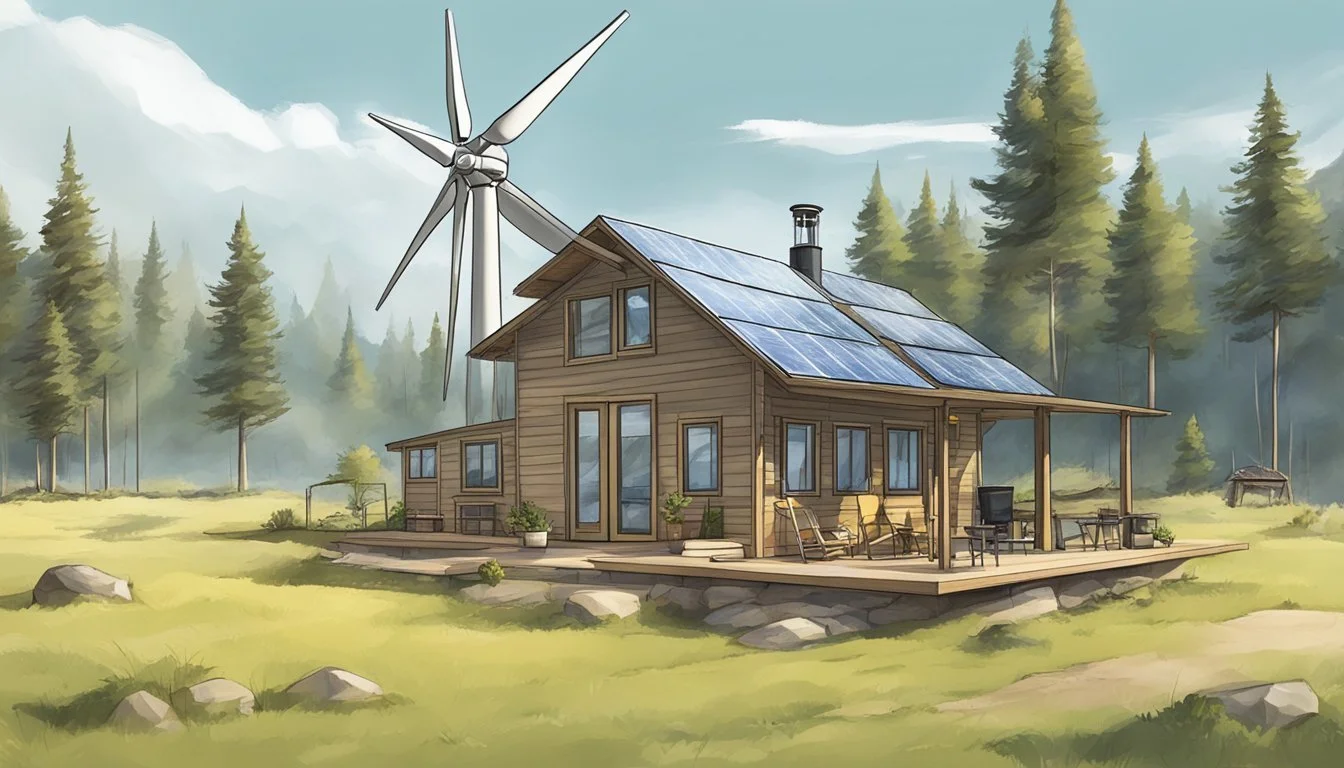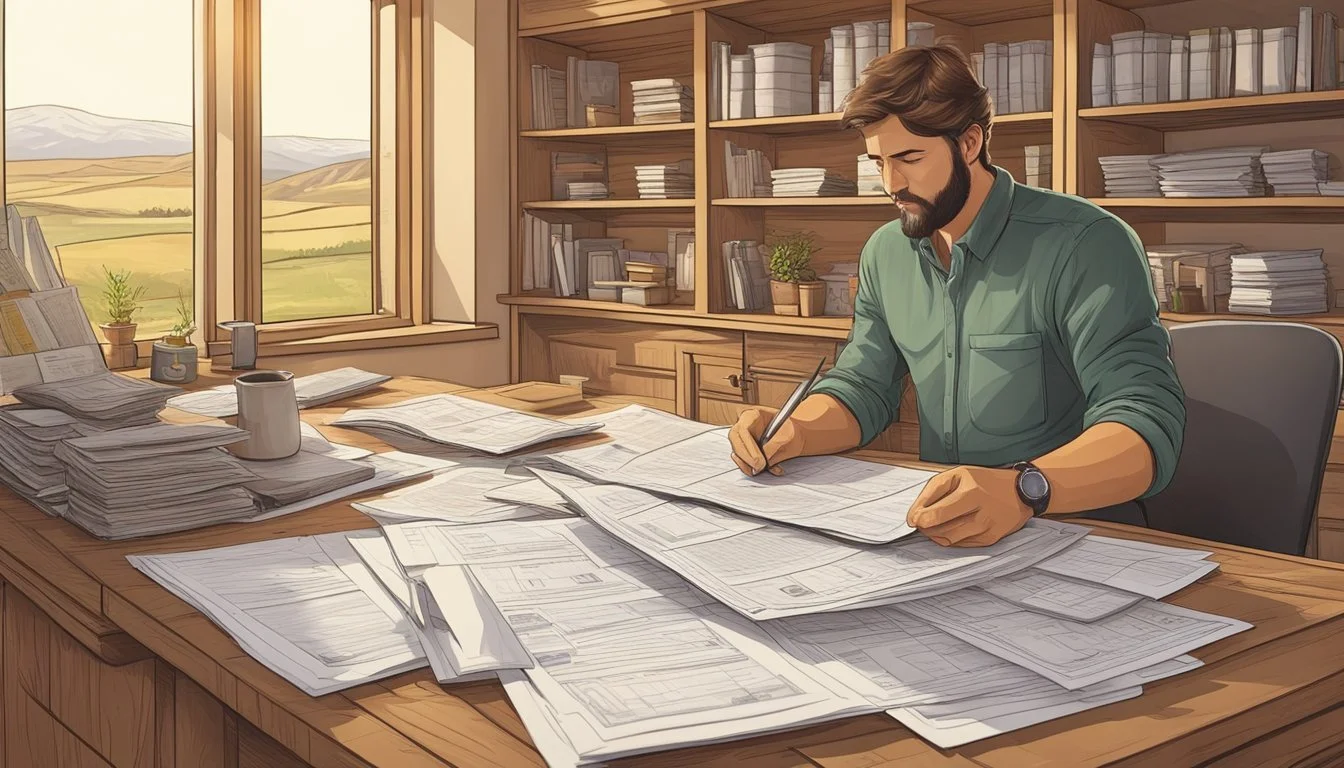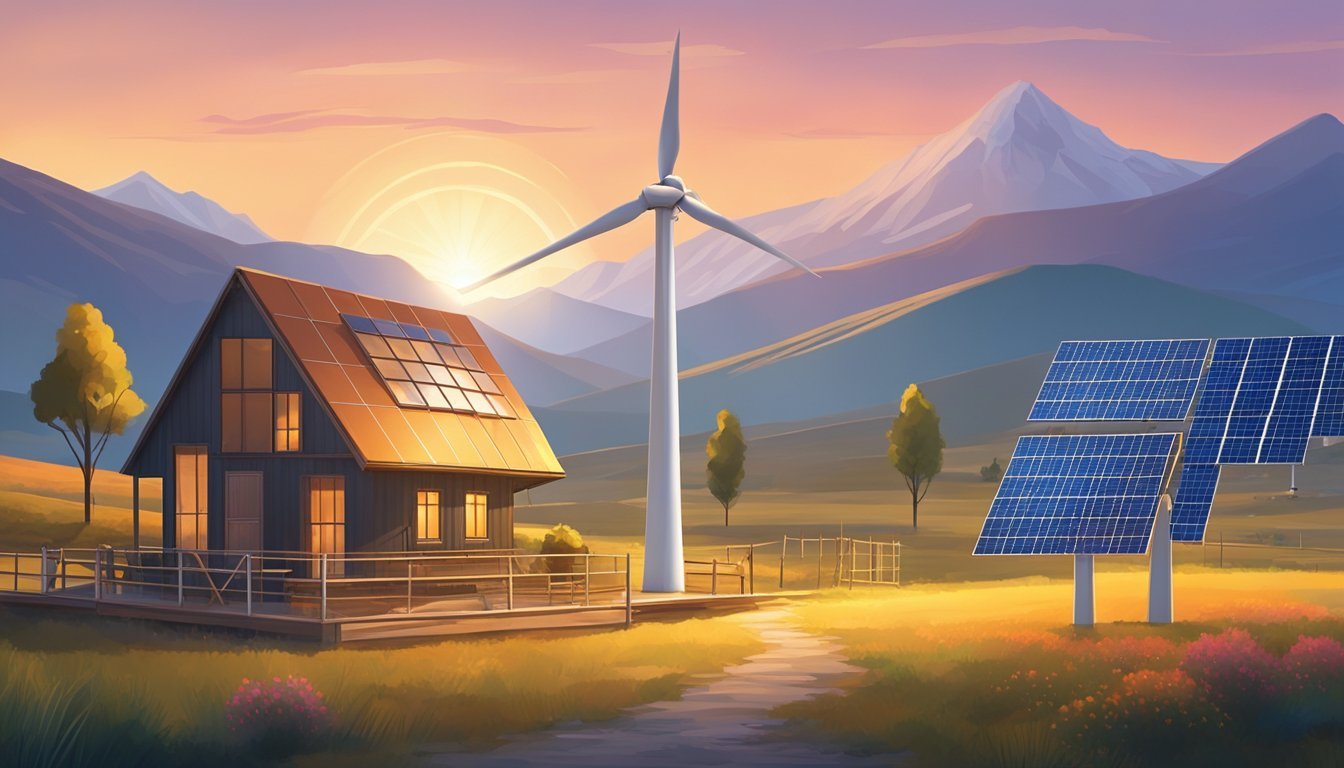Off-Grid Wind Energy for Homesteaders
Harnessing Sustainable Power
As the allure of sustainable living beckons, an increasing number of homesteaders are gravitating towards off-grid energy solutions to enhance their self-sufficiency. Wind energy, a clean and renewable power source, has proven to be a viable method for homesteaders seeking autonomy from traditional utility services. By harnessing the natural power of the wind, these individuals are able to generate their own electricity, reducing their environmental footprint and asserting control over their own energy needs.
Considering the practicality of wind energy for off-grid living, homesteaders typically evaluate the consistency of wind patterns, the initial investment, and the potential energy output of wind turbines. A properly sited and sized turbine can provide a substantial portion of a homestead's energy requirements. Additionally, the integration of a battery bank ensures that excess energy generated during periods of high wind can be stored for use during calmer conditions, thus ensuring a stable supply of power.
Turbines offer a complementary solution to other renewable energy sources, such as solar panels, which may face limitations during cloudy or overcast weather. The combination of wind and solar energy can yield a more consistent and dependable off-grid energy system. With an eye on the future, homesteaders who invest in wind energy contribute to a culture of sustainability and resilience, vital philosophies in the realm of rural and remote living.
Understanding the Basics of Wind Energy
Wind energy stands as a cornerstone of renewable energy solutions, harnessing the power of wind through technology to generate electricity. This section will break down the core principles behind wind power and the various turbines utilized in the process.
The Science of Wind Power
A wind power system harnesses the natural movement of air and converts it into mechanical energy or electricity. Wind is generated by the uneven heating of the Earth’s surface by the sun, leading to variations in atmospheric pressure.
As air moves from high to low-pressure areas, the kinetic energy of wind is captured by the blades. These blades turn a rotor connected to a generator, which then produces electricity. For a small wind turbine, this process is sufficient to power a home or small community, ideal for an off-grid system with energy independence away from the utility grid.
Key Components:
Blades: Capture the wind resource.
Rotor: Transfers blade movement to the generator.
Generator: Converts mechanical energy into electricity.
Types of Wind Turbines
There are primarily two types of turbines utilized in capturing wind:
Horizontal-Axis Turbines (HAWTs):
Common Features: Typically have two or three blades and are the most recognized style.
Placement: Mounted on a tower to capture more energy at higher elevations where the wind is stronger.
Vertical-Axis Turbines (VAWTs):
Common Features: Blades are attached to a vertical rotor, which can capture wind from any direction without needing to pivot.
Advantages: They can be placed closer to the ground, making maintenance easier.
Small turbines are advantageous for individual homes, farms, or remote areas where connecting to the main electricity grid is not practical. They provide a clean, cost-effective source of energy, assuming the location has a sufficient and consistent wind speed to generate power.
Integrating a Wind Turbine
The successful integration of wind energy into off-grid power systems is pivotal for homesteaders seeking energy independence. Essential components include the combination of wind with solar power, the use of battery storage, and efficient power management through inverters.
Battery Storage Solutions
Effective battery storage is critical in an off-grid setup to maintain a stable power supply even when wind and solar energy production fluctuates. Batteries store excess energy generated, ensuring that:
Energy is available during calm or cloudy periods when generation is low.
The depth of battery discharge is reduced, prolonging battery life.
Advancements in battery technology have led to more durable and cost-effective solutions for off-grid homesteaders.
Inverters and Power Management
Inverters convert the direct current (DC) from turbines and solar panels into alternating current (AC), the form most home appliances use. Effective power management entails:
...
Design and Installation
In the realm of renewable energy sources, wind power stands as a beacon for homesteaders seeking self-reliance. Design and installation are critical steps that determine the energy efficiency and long-term viability of a wind system.
Average Wind Speed Assessment
A thorough site assessment is imperative for homesteaders to ensure their location is conducive to energy generation. Key considerations include:
Average Wind Speed: Areas with consistent wind speeds of at least 12 miles per hour are ideal.
Obstructions: The site should be free from significant obstructions such as tall trees or buildings that might impede wind flow.
Zoning and Permits: Local regulations may dictate specific requirements for installation.
Turbine Installation
The installation of a wind turbine is a technical process that requires careful planning to achieve effective results. Essential steps include:
Foundation Construction: A robust foundation that can support the turbine structure and withstand wind forces.
Tower Erection: The tower must be tall enough to reach higher wind streams and avoid turbulence caused by obstacles at ground level.
Turbine Assembly: The turbine and blades need precise assembly, to ensure optimal alignment with the wind.
Electrical Systems: Safe and efficient electrical connections are essential for transferring generated power to the homestead.
System Maintenance
Consistent maintenance ensures the longevity and efficiency of a wind turbine system. Homesteaders should implement a maintenance schedule that includes:
Routine Inspections: Regularly inspect turbines for wear and damage to blades, bearings, and electrical components.
Lubrication: Adequately lubricate moving parts to minimize friction and prevent mechanical failures.
Performance Monitoring: Regular checks on power output to detect and address any discrepancies that might indicate issues with the system.
By meticulously covering each step from site assessment to ongoing maintenance, homesteaders can harness wind power as a renewable energy source, contributing to self-sufficiency and sustainable living.
Assessing Environmental Impact
When homesteaders consider wind power as an off-grid power solution, it is important to balance the benefits of renewable energy against the potential environmental impact. This assessment involves understanding the effects on local wildlife and the reduction of the carbon footprint that comes with utilizing wind power.
Effects on Local Wildlife
Turbines can affect local wildlife, particularly birds and bats, which may collide with turbine blades. To mitigate this, site selection is critical. Areas with heavy bird migration routes or with endangered species should be avoided. Moreover, proper planning and technology choice, such as utilizing turbines with lower rotor speeds, can minimize these risks to wildlife.
Carbon Footprint Reduction
Switching to wind energy helps in reducing the carbon footprint of a homestead. A turbine can produce electricity without emitting harmful greenhouse gases associated with climate change. According to sustainability principles, an 8kW wind turbine can substantially offset a typical household's energy consumption, leading to a cleaner and less carbon-intensive lifestyle. This shift is aligned with global efforts to counteract climate change by reducing dependency on fossil fuels.
Legal and Financial Considerations
When diving into the realm of off-grid wind power, homesteaders should pay careful attention to the legal requirements and financial implications. These can greatly impact the overall feasibility and sustainability of wind power projects.
Zoning and Permitting
Local zoning laws dictate where a wind turbine can be installed and may require special permits. One must check with the local planning department to understand:
Specific setback requirements from property lines
Maximum allowable height for structures
Noise regulations that could impact turbine operation
Obtaining the correct permits is not just a formality; it's a legal requirement to ensure safety and compliance with local standards.
Costs and Incentives
The financial investment in a wind power can be considerable. Typical costs for residential setups range from $20,000 to $40,000, inclusive of the turbine and necessary infrastructure. These figures can vary depending on the:
Size of the turbine
Complexity of the installation
Local geography and wind patterns
To mitigate some of the expenses, one should explore available incentives such as:
Federal tax credits
State subsidies
Renewable energy certificates
It's crucial to develop a budget that accounts for both upfront costs and long-term maintenance to assess the full financial scope. Homesteaders must balance the initial expense with the potential energy savings and environmental benefits over time.
Complementary Off-Grid Energy Sources
Harnessing the wind for off-grid living allows homeowners to tap into nature's renewable resources, ensuring a constant supply of power even during conditions unsuitable for other energy sources.
An effective complementary option is to install a solar system alongside to provide off-grid power during different environmental conditions or when wind levels are low.
Solar Power Generation
Solar energy captures sunlight, a powerhouse of energy, and converts it into electricity using photovoltaic (PV) panels. On sunny days, these systems perform optimally, producing a surplus of power that can be stored for later use.
Advantages:
Solar power works well in hot, sunny environments
Reliable during daylight hours, even in cold weather
Challenges:
Energy efficiency drops on cloudy days
Requires battery storage for night-time use
Wind and Solar Hybrid Systems
Hybrid systems that combine turbines and solar panels harness energy more consistently, as the wind can fill in when solar power is insufficient, especially during the night or on overcast days. These systems offer homesteaders a balanced approach to off-grid power generation, reducing the reliance on any single energy source.
Wind Power: Provides electricity during overcast days and at night.
Solar Power: Offers significant energy during sunny days.
The synergy between the two can yield a more reliable energy supply compared to standalone systems.
Troubleshooting and Upgrades
Maintaining the reliability and durability of off-grid systems requires regular troubleshooting and strategic upgrades. Homesteaders can optimize their setups by addressing common challenges and considering system improvements.
Common Challenges
Maintenance Issues: Routine checks are an important factor for identifying wear and tear on turbine blades, bearings, and electrical connections. Beyond visual inspections, one should listen for unusual noises or vibrations and monitor energy output levels for signs of malfunction.
Blade Damage: Regularly inspect for cracks or splits, which can arise from debris or severe weather.
Connection Wear: Check electrical connections for corrosion or wear, which can impede energy flow and efficiency.
Durability Concerns: Off-grid wind systems are exposed to the elements, making them susceptible to environmental stresses.
Rust and Corrosion: Treat metal parts with rust inhibitors and perform periodic repainting to extend lifespan.
Structural Integrity: After extreme weather, verify the stability of the turbine tower and anchoring system.
Upgrading Your Off-Grid System
System Upgrades: To enhance efficiency and reliability, upgrading components of the wind system may be necessary.
Higher-Capacity Batteries: Upgrading to a larger battery bank can ensure energy is available during periods of low wind.
Advanced Charge Controllers: Consider controllers with Maximum Power Point Tracking (MPPT) for improved charging efficiency.
Increasing Durability:
Blade Material Upgrade: Switching to carbon fiber or other reinforced composites can increase blade durability and reduce maintenance.
Reinforced Towers: Invest in towers designed for higher-stress loads to withstand harsh weather conditions.
Regular troubleshooting and considered upgrades are instrumental in maintaining a homesteader's off-grid wind system for sustained performance and longevity.
Off-Grid Energy for Different Climates
When planning for off-grid energy solutions, it's crucial to consider the climate and wind patterns of the specific location. Homesteaders must adapt to varying wind conditions to ensure the efficiency and reliability of their wind energy systems.
Energy in High Wind Speed Areas
In regions where strong and consistent winds prevail, wind energy serves as a robust off-grid solution. High-wind areas benefit from the natural abundance of this resource, making turbines highly effective. These areas often include coastal regions, plains, and mountaintops where wind speeds are higher due to less obstruction.
Climate Adaptation:
Install taller towers to capture higher wind speeds commonly found at increased altitudes.
Use turbines designed for high wind conditions to maximize energy production.
Site-Specific Conditions:
Conduct thorough site assessments to determine the best turbine placement.
Ensure proper anchoring and construction to withstand high wind forces.
Adapting to Less Windy Climates
Less windy climates require more strategic planning for wind energy capture. In these areas, it is essential to optimize every aspect of the system to harness what wind is available effectively.
Climate Adaptation:
Opt for turbines that can operate at lower wind speeds, often referred to as low-wind or light-wind.
Consider complementary energy sources, such as solar panels, to diversify energy production.
Wind Patterns:
Study local wind patterns to plan the optimal turbine layout.
Install anemometers to track and log wind speeds for a better understanding of seasonal and daily variations.
By carefully considering climate adaptation, wind patterns, and site-specific conditions, homesteaders can utilize wind efficiently across diverse climates.
Technological Advances and Future Prospects
The wind power system landscape of is rapidly evolving with the introduction of cutting-edge technologies and innovative community initiatives, signifying a transformative era for homesteaders seeking sustainable energy autonomy.
Emerging Technologies
Recent innovations in turbine technology are set to significantly enhance the efficiency and viability of off-grid wind power solutions for homesteaders. Advancements such as improved blade aerodynamics, smart resource mapping algorithms, and robust energy storage systems have been pivotal. These improve not only the energy yield from turbines but also ensure better adaptability to variable wind conditions. Furthermore, micro wind turbines are becoming more accessible, tailored for small-scale operations, and are increasingly seen as a viable component of sustainable technology.
Innovations to Note:
Smart turbines with adaptive pitch and yaw control
Enhanced battery technology for energy storage, like lithium-ion batteries
Introduction of vertical axis wind turbines (VAWTs) for lower wind conditions
DIY Guides and Tutorials
Homesteaders can access extensive DIY guides and tutorials that provide step-by-step instructions on setting up a wind energy system. These guides often cover crucial aspects such as:
Site assessment for optimal wind harnessing
Details on materials and tools required for building a turbine from scratch
Installation processes and safety precautions
Instructional content is typically found on:
Educational platforms offering courses and webinars on renewable energy
Community forums where experienced off-grid homesteaders share insights and advice
Video platforms with tutorials from construction to maintenance
Selected Educational Resources:
Online courses from platforms like Coursera and Udemy
YouTube tutorials from reputable channels specializing in renewable energy technology
E-books and PDF guides from wind enthusiasts and experts





